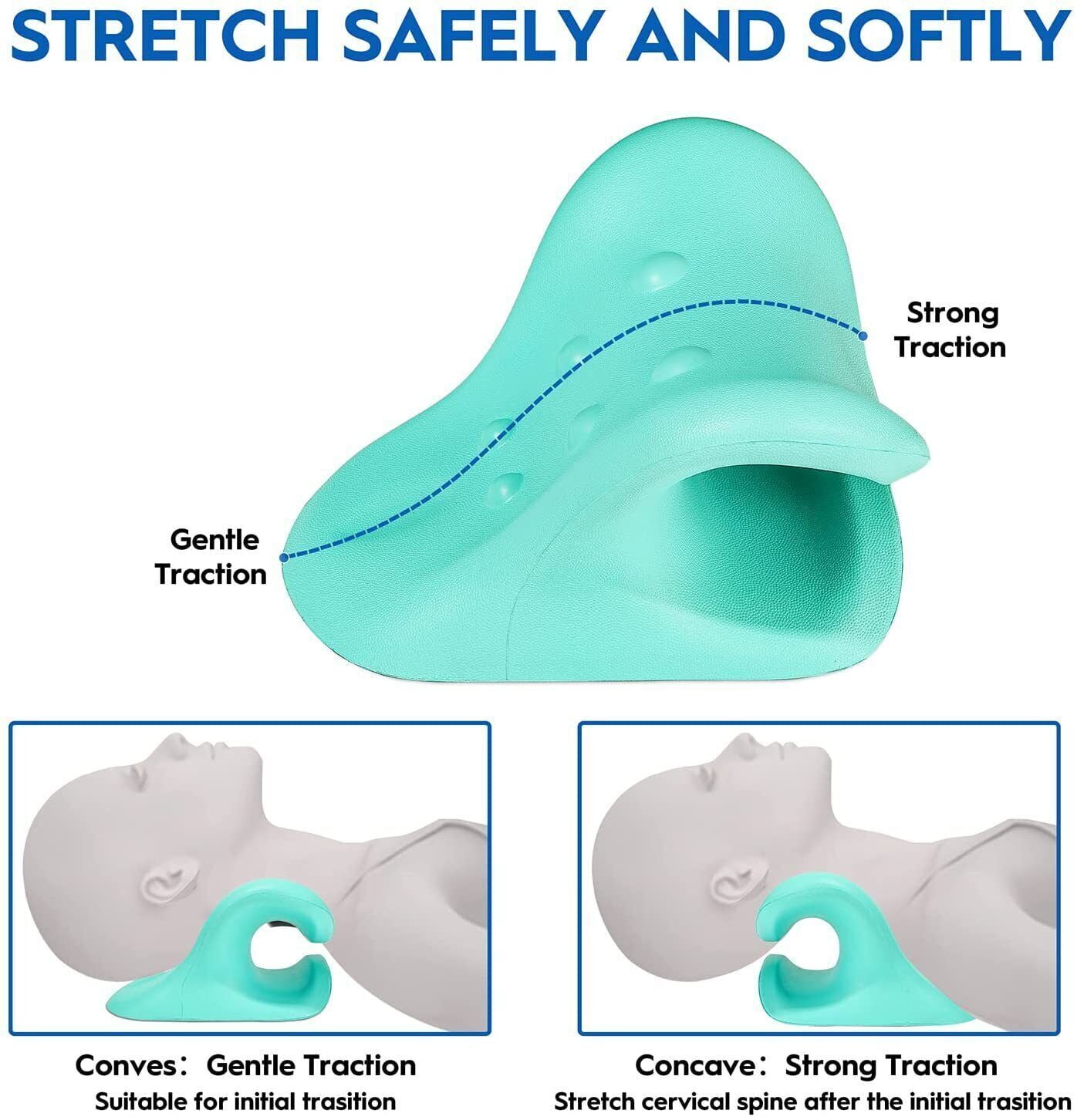Discover Neck Cloud: A Straightforward Option for Neck Pain and Stress
Discover Neck Cloud: A Straightforward Option for Neck Pain and Stress
Blog Article
Neck Pain in the Workplace: Determining Risk Factors and Carrying Out Ergonomic Solutions
Neck discomfort in the office is a common problem that can impact staff member well-being and performance. By comprehending the various danger factors adding to neck pain and carrying out ergonomic services, organizations can create a more conducive work setting.
Common Root Causes Of Neck Discomfort
Neck pain in the workplace is a widespread issue that can be associated to numerous typical causes. One of the key wrongdoers is inadequate pose, which usually results from long term durations of sitting incorrectly at a workdesk or workstation. This can lead to strain on the neck muscular tissues and joints, creating discomfort and pain. Furthermore, repetitive motions such as frequent flexing, twisting, or reaching can additionally add to neck pain with time. Straining the neck by holding it in an uncomfortable setting for extensive periods, like nestling the phone between the ear and shoulder, can exacerbate the concern (neck cloud).

Ergonomic Threat Elements
Poor ergonomics in the work environment can substantially contribute to neck pain among workers. Variables such as improper desk elevation, inadequate chair support, and uncomfortable positioning of computer system displays can all contribute in the growth of neck discomfort. When employees are required to sit for extensive durations in placements that stress their neck muscles, it can lead to stiffness, pain, and also extra serious bone and joint issues in time.
In addition, inadequate ergonomic practices can lead to workers taking on awkward positions while working, such as craning their necks to see a computer system screen or reaching uncomfortably for a computer mouse or keyboard. neck cloud. These recurring motions and abnormal positions can place excessive anxiety on the neck and surrounding muscles, leading to discomfort and lowered performance

Desk Setup Recommendations
When establishing a desk in the work environment, it is necessary to pay focus to the ergonomics of the setting. To reduce the risk of neck discomfort and pain, there are numerous desk setup recommendations that employees should think about. To start with, make certain that the computer monitor is positioned at eye level to avoid straining her response the neck by looking up or down. The key-board and computer mouse must be put at a height where the arm joints are curved at a 90-degree angle to promote correct wrist placement. Additionally, the chair height should allow the feet to relax level on the flooring with thighs alongside the ground.
It is also important to have ample illumination to reduce eye strain, as scrunching up your eyes or leaning onward can lead to neck stress. Organize the workdesk design to maintain often used items within arm's reach, restricting the demand for repeated turning or reaching motions. By implementing these desk arrangement recommendations, employees can develop a much more ergonomic work space that supports neck health and wellness and minimizes the danger of creating job-related neck pain.
Stretching and Workout Tips
Easy desk-friendly stretches can assist reduce neck pain and protect against tightness. Neck rolls, shoulder shrugs, and mild side-to-side neck stretches are efficient in eliminating tension.
It is important to take short breaks throughout the workday to do these exercises. Setting suggestions or making use of apps that motivate motion can assist develop a routine stretching routine. It is very important to listen to your body and avoid overstretching, particularly if you are brand-new to these exercises. Consistency is vital, so aim to incorporate extending and workout into your daily job routine. By prioritizing these tasks, you can improve your physical health, minimize the risk of neck discomfort, and boost your total productivity in the workplace.
Importance of Regular Breaks
In a hectic work setting where needs can contribute to physical pressures like neck pain, developing a regimen that emphasizes the value of routine breaks is extremely important. By incorporating short breaks right into the job routine, employees can lower the threat of developing neck discomfort and enhance overall convenience and efficiency.
Regular breaks enable workers to rest their More Bonuses muscles, stretch, and transform settings, avoiding rigidity and promoting much better circulation. Motivating employees to take quick breaks every 30-60 mins can help reduce the accumulation of tension in the neck and shoulders. These breaks can also function as an opportunity for employees to exercise relaxation methods or gentle neck stretches, even more promoting bone and joint wellness. Applying a society that values and focuses on normal breaks can have a substantial influence on minimizing neck discomfort and boosting total wellness in the work environment.
Final Thought
Finally, resolving ergonomic risk elements and executing appropriate workstation arrangements are essential in decreasing neck discomfort in the work environment. By advertising great position, giving ample assistance, and encouraging regular breaks and stretches, organizations can develop a much healthier and more effective workplace for workers. Focusing on worker wellness through ergonomic options about his is crucial to stop discomfort and improving general office contentment.
Neck discomfort in the office is a widespread problem that can influence worker health and performance. By recognizing and addressing these common reasons of neck discomfort in the work environment, companies can take proactive steps to produce a much more ergonomic and comfy job atmosphere for their staff members.
Poor functional designs in the office can substantially contribute to neck pain amongst workers. By carrying out these desk configuration referrals, workers can produce a more ergonomic work space that supports neck health and wellness and lowers the risk of establishing occupational neck discomfort.
Neck rolls, shoulder shrugs, and gentle side-to-side neck stretches are effective in easing tension.
Report this page